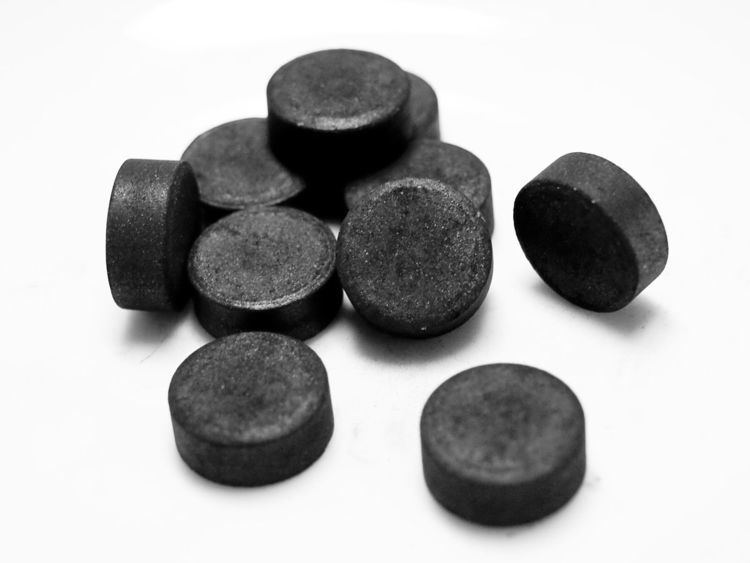Appearance black powder | ||
 | ||
Bone char (Latin: carbo animalis) is a porous, black, granular material produced by charring animal bones. Its composition varies depending on how it is made; however, it consists mainly of tricalcium phosphate (or hydroxylapatite) 57–80%, calcium carbonate 6–10% and activated carbon 7–10%. It is primarily used for filtration and decolorization.
Contents
Production
Bone char is primarily made from cow bones; however, to prevent the spread of Creutzfeldt–Jakob disease, the skull and spine are never used. The bones are heated in a sealed vessel at up to 700 °C (1,292 °F); a low concentration of oxygen must be maintained while doing this, as it affects the quality of the product, particularly its adsorption capacity. Most of the organic material in the bones is driven off by heat, and was historically collected as Dippel's oil; that which is not driven off remains as activated carbon in the final product. Heating bones in an oxygen-rich atmosphere gives bone ash, which is chemically quite different.
Used bone char can be regenerated by washing with hot water to remove impurities, followed by heating to 500 °C (932 °F) in a kiln with a controlled amount of air.
Water treatment
The tricalcium phosphate in bone char can be used to remove fluoride and metal ions from water, making it useful for the treatment of drinking supplies. Bone charcoal is the oldest known water defluoridation agent and was widely used in the United States from the 1940s through to the 1960s. As it can be generated cheaply and locally it is still used in certain developing countries, such as Tanzania. Bone chars usually have lower surface areas than activated carbons, but present high adsorptive capacities for certain metals, particularly those from group 12 (copper, zinc, and cadmium). Other highly toxic metal ions, such as those of arsenic and lead may also be removed.
Sugar refining
Historically, bone char was often used in sugar refining as a decolorising and deashing agent, particularly in cane sugar as this contains more colored impurities. It has largely fallen out of use, particularly in the US and Europe, mainly for economic reasons but also due to the concerns of vegetarians and vegans, as well as various religious groups.
Bone char possesses a low decoloration capacity and must be used in large quantities, however, it is also able to remove various inorganic impurities; most importantly sulfates and the ions of magnesium and calcium. The removal of these is beneficial, as it reduces the level of scaling later in the refining process, when the sugar solution is concentrated. Modern alternatives to bone char include activated carbon and ion-exchange resins.
Black pigment
Bone char is also used as a black pigment for artist's paint, printmaking, calligraphic and drawing inks as well as other artistic applications because of its deepness of color and excellent tinting strength. Bone black and ivory black are artists' pigments which are in use since historic times by painters such as Rembrandt and Velázquez but also more recently by Manet or Picasso. The black dresses and high hats of the gentlemen in Manet's Music in the Tuileries are painted in ivory black.
Ivory black was formerly made by grinding charred ivory in oil. Today ivory black is considered a synonym for bone black. Actual ivory is no longer used because of the expense and because animals who are natural sources of ivory are subject to international control as endangered species.
